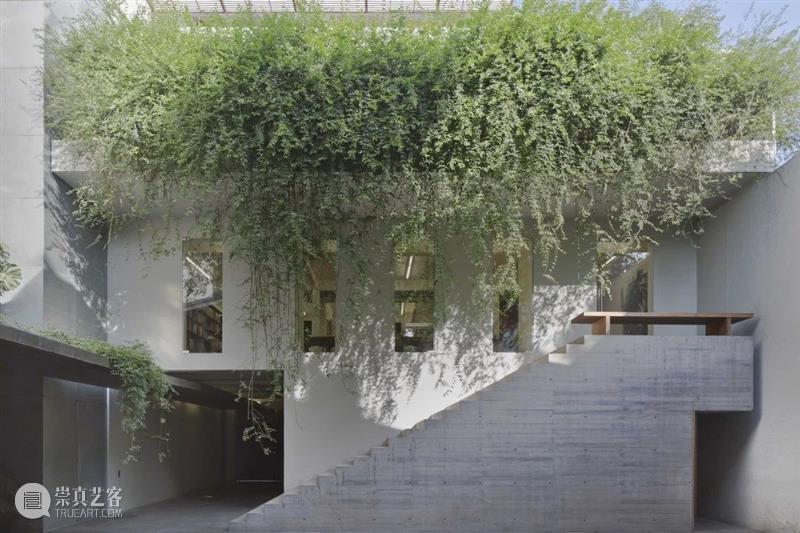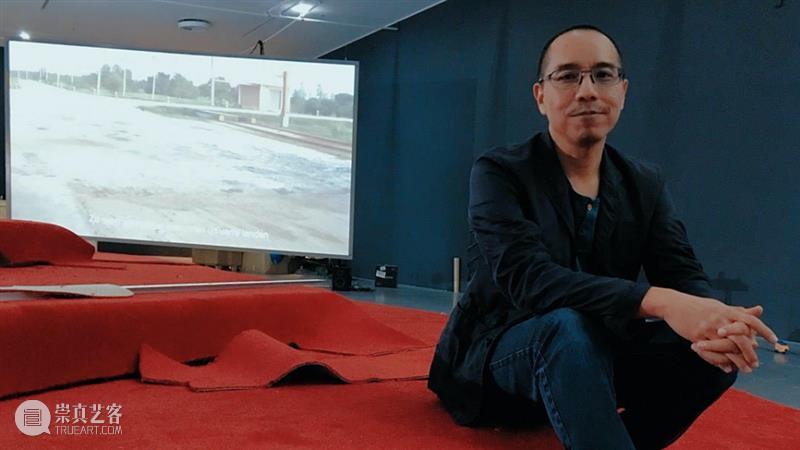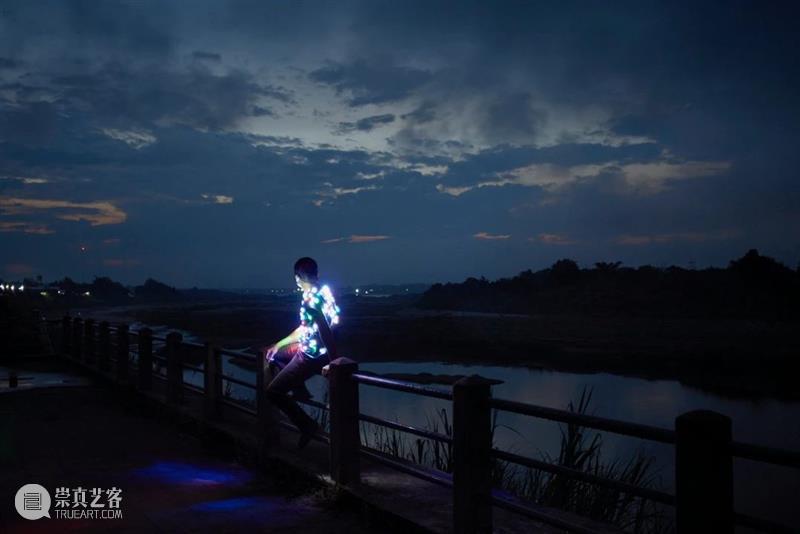
ANNOUNCEMENT
不久前,阿彼察邦·维拉斯哈古受在北京隔离的贾樟柯为《荷兰电影杂志》(de Filmkrant)写的一封信所感动,在清迈家中写了回信,在此与大家转发分享。

kurimanzutto,墨西哥城
生命的迹象:
来自阿彼察邦·韦拉斯哈古的一封信
"此刻“电影
译/李斯佩克朵
译文首发于导筒directube,谨此转载

阿彼察邦·维拉斯哈古
贾樟柯的信令我感动,我由此感受到了禁闭时代里紧密联系的重要性。我也渴望写信,分享如下想法。
今天早上,我在思考“旅行”这个词,思考我们跟这个词的关系是怎样的。年少时,我们去公路旅行,焦躁不安的头脑会催促我们一遍遍问:“我们到了吗”“我们什么时候到”。随着年龄增长,我们会更关注途经的风景。我们训练自己在旅途中保持平静。 我们知道终点就在那里。
电影本身就是一段旅程,推动着我们朝向各异的戏剧性目标。在通往不同目标的路上还有一些充当“小目标”的事物。电影制作人越是能顺畅地一个接一个实现这些“小目标”,让观众忘记时间,他或她就离电影制作的“艺术”越近。关键在于,服装师、化妆师、录音师、灯光组、剪辑师、作曲师等,都在努力推动观众抵达目的地。
与电影不同的是,这次新冠肺炎之旅的目的地是模糊的。不像公路旅行,我们没有真的移动。大多数人都呆在家里,看着窗外不变的风景……一直看着。
我们感受到自己身心的脆弱。我们清楚自己的时钟——内在的和外在的。我的早餐习惯已经养成。准备早餐时,我记得自己走的每一步。我记得每个特殊时间点室外太阳的方位。
为了保持心智健全,一些人欣然接受了“正念”的技巧。我们试着观察周遭、情绪、动作、时间和无常。当未来不确定时,此刻就变得有价值。
今天早上,吃完早饭(一盘水果、weet-bix麦片和两个煮鸡蛋),我设想了一种可能。或许这种现状会培养出一群更能活在当下的人。他们能够长时间盯着某些东西看。他们在完整的觉知中健全生长。
我们战胜病毒之后,电影业自昏迷中苏醒之时,这个新群体,作为电影观众,不会想要老旧不变的电影之旅。他们已经掌握了观察的艺术:观察邻居、屋顶、电脑屏幕。通过与朋友的无数次视频通话,通过单一角度连续镜头拍摄的群聊晚餐,他们得到训练。他们需要更接近现实生活的实时电影。他们想要的是既没有“小目标”也没有终点的关于“此刻”的电影(the cinema of Now)。
接下来,贝拉·塔尔、蔡明亮、卢奎西亚·马特尔或许还有阿彼查邦和佩德罗·科斯塔等的电影会被介绍给他们。一时间,这些默默无闻的导演会因为票房激增而成为百万富翁。他们会买新的太阳镜,雇佣一批批保镖。他们会购入豪宅、汽车和烟厂,不再拍电影。但是很快观众就会指责这种“缓慢电影”太快了。抗议标语会出现,上面写着:“我们要零情节,不要摄影机移动,不要剪辑,不要音乐,什么都不要。”
为了把电影从自身的结构和历程中解放出来,“新冠肺炎电影宣言”(CCM)将被起草。“我们的电影不是为了满足心理快感。永恒的目的地是观众,是开悟者。”
在大城市黑暗的放映厅里,人们会盯着纯白的光。接下来的电影可能就没那么亮。有些电影太昏暗以至于在影院里几乎看不见观众的头。然而,观众和银幕之间交换着“完整觉知”能量的滋滋声。就像贾樟柯在信中描绘的那样:“……肩并肩坐在一起。”是的,“这是人类最美的姿态。”
这场运动将在全球引起关注,就像大流行病。“空无电影节”(Nothing Film Festival)很快就会遍地开花。与此同时,“易分心”“依恋型”个体成为少数群体。在公共场合,为了避免被盯着看,他们假装很平静。他们缓慢呼吸、细嚼慢咽,很少表现出愤怒。然后,回到家,他们就尖叫、睡去,在梦里又尖叫了几声。
很快,这些少数派开始聚集在暗巷里。他们一起飞奔,快言快语。他们不会等别人把话说完。他们沉湎于千头万绪之中。有一天,一个年轻人说他拍了部电影。他带着躁动不安的朋友们来到地下室,向他们展示自己的作品。这群人吃惊地发现这部电影包含着某种东西。他们疑惑地盯着正在放映的车窗外影像,看了三个小时。第一次,他们能够安静坐着,他们的心静了下来。
尽管官方颁布禁令,但是危险的放映仍在继续。在地堡里,在棚屋里,紧张的人们挤在一起看——树枝、大海、风,长达数小时。违禁的素材将会流通,并被匆忙剪辑在一起。
一个特别的晚上,银幕上放映着:一个男人睡了五个小时,接着:
下午,三个男人坐在桌子旁。其中一个在抽烟看报纸,另外两个在打牌。吸烟者叫来一个女人,女人为他们拿来一瓶红酒。他把酒倒进杯子里,递给他的朋友。他们干杯、喝酒。女人拿着托盘又出现了,收走了吸烟者的杯子。(这时,有位观众再也无法接受这些情节,他去了(走到)室外,闭上了眼睛。)吸烟者继续看报。他给朋友们看了篇文章。他们都放声大笑。与此同时,他从烟盒里拿出类似于纸或者信封的东西。电影结束了。观众静静坐着。这三个男人显然是没有开悟的——他们在漫无目的和劣习中迷失了67秒。
然后,一列火车驶近车站。车头向左驶出画框。乘客下车时,站台上的人向他们问好。
镜头持续了50秒。
在一个阳光灿烂的日子里,大门打开,工人们离开工厂,镜头持续46秒。

阿彼察邦·维拉斯哈古,《明日今夜》,2011
Signs of Life: A letter from Apichatpong Weerasethakul
The Cinema of Now
I was touched by Jia Zhangke’s letter which made me feel the importance of kinship in our time of confinement. I aspire to do the same by sharing a little thought as follows.
This morning I was thinking about a word, ‘journey,’ and how we have related to it. When we were young on a road trip, our restless mind prompted us to repeat: ‘Are we there yet?’, ‘When are we going to arrive?’ As we grew older we paid more attention to the passing scenery. We observed the trees, the houses, the signs, the other vehicles. We trained ourselves to be calm on a journey. We knew there was a destination.
A movie itself is a journey. It drives us towards different dramatic points. Along the way to the points are fillers that function like mini-destinations. The more seamless a filmmaker fills the path and makes the audience forget about time, the closer he or she is to the ‘art’ of filmmaking. At the core, the costumer, the make-up artist, the boom man, the lighting team, the editor, the musician, and so on, all work hard to propel the audience to the destinations.
Unlike a movie, this Covid-19 journey’s destination is vague. Unlike a road trip, we are not moving. Most of us stay put in our homes. We look out of our windows to the same scenery and… we keep looking.
We feel the vulnerability of our mind and body. We are aware of our clocks – internal and external. My morning routine has become established. I remember each step I take as I prepare breakfast. I remember what the sun’s direction is outside at any particular time.
To keep our sanity, some of us have embraced mindfulness techniques. We try to observe our surroundings, emotions, actions, time, impermanence. When the future is uncertain, the now becomes valuable.
This morning, after breakfast (a plate of fruits, weet-bix cereal, and two boiled eggs), I imagined a scenario. Perhaps this current situation will breed a group of people who have developed an ability to stay in the present moment longer than others. They can stare at certain things for a long time. They thrive in total awareness.
After we have defeated the virus, when the cinema industry has woken up from its stupor, this new group, as moviegoers, wouldn’t want to take the same old cinema journey. They have mastered the art of looking; at the neighbors, at the rooftops, at the computer screens. They have trained through countless video calls with friends, through group dinners captured in one continuous camera angle. They need a cinema that is closer to real life, in real time. They want the cinema of Now which possesses no fillers nor destination.
Then they will be introduced to the films of Béla Tarr, Tsai Ming-Liang, Lucrecia Martel, maybe Apichatpong and Pedro Costa, among others. For a period of time, these obscure filmmakers would become millionaires from a surge of ticket sales. They would acquire new sunglasses and troops of security guards. They would buy mansions and cars and cigarette factories and stop making films. But soon the audience would accuse this slow cinema of being too fast. Protest signs would appear, reading: “We demand zero plots, no camera movement, no cuts, no music, nothing.”
A Covid-19 Cinema Manifesto (CCM) would be drawn up for cinema to liberate itself from its structure and its own journey. “Our cinema has no place for psychological gratifications. The perpetual destination is the audience, the enlightened.”
In the dark halls in major cities, people would stare at the pure white light. The next film might be a little less bright. Some movie would be so dim that in the theater there is barely a visible trace of the viewers’ heads. However, there’s a buzz of total-awareness energy that has been exchanged between the people and the screen. It’s like what Jia described in his letter: “…sitting together, shoulder to shoulder.” And yes, “this is the most beautiful gesture of mankind.”
The movement will gain traction worldwide like a pandemic. Nothing Film Festival™ will proliferate. Meanwhile, the ‘easily distracted’, the ‘attached’ individuals have become a minority. In public spaces, to avoid the stare, they pretend to be serene. They breathe and chew food slowly. They rarely display anger. Then they return home to scream, sleep and scream some more in their dreams.
Soon the minority starts to gather in dark alleys. They sprint together and talk fast. They don’t wait for the others to finish their sentences. They indulge in multiple thoughts at once. One day a young man says he has made a film. He leads his agitated friends to his basement and shows them his creation. The group is shocked to discover that the film contains something. They stare in disbelief at a projected image of a scenery out of a car window, for three hours. For the first time they can sit still, their minds quieted.
The dangerous screenings continue despite official bans. In bunkers, in sheds, nervous people squeeze in to see something – tree branches, the sea, the wind, for hours. Forbidden materials will circulate. They are being stitched together hastily.
One particular evening, the screen shows a man sleeping for five hours, followed by:
Three men sitting at a table in the afternoon. One of them is smoking and reading a newspaper, the other two are playing cards. The smoker calls a woman who brings them a bottle of wine. He pours the wine into the glasses and offers them to his friends. They cheer and drink. The woman reappears with a tray and takes the smoker’s glass away. (At this point, one person in the audience cannot take in all the action anymore. He steps outside and closes his eyes.) The smoking man continues reading his paper. He points out an article to his friends. They all laugh heartily. Meanwhile, he is taking what seems to be a piece of paper out of his cigarette box, or an envelope. The film ends. The audience sits in silence. The three men are clearly
not enlightened – they had been lost in their wandering minds and vices for 67 seconds.
Then,
A train approaches the station. Its engine moves out of frame to the left. People on the platform greets the passengers as they step down.
The shot lasts 50 seconds.
On a bright day, a door opens,
and the workers are leaving a factory
for 46 seconds.
Originally published in de Filmkrant.
有关kurimanzutto的更多信息,请访问我们的网站kurimanzutto.com,持续关注我们的微信公众号,并在各种社交媒体通过@kurimanzutto和#kurimanzutto与我们互动!
For more information on kurimanzutto, please visit us at kurimanzutto.com, and connect with us on social media via @kurimanzutto and #kurimanzutto.


已展示全部
更多功能等你开启...





 分享
分享